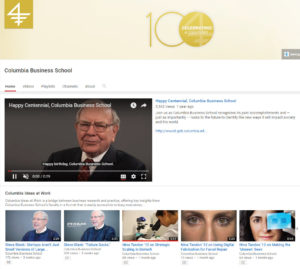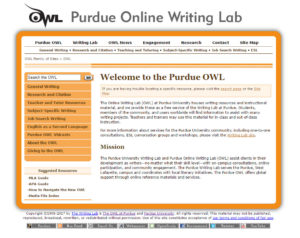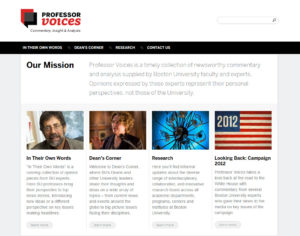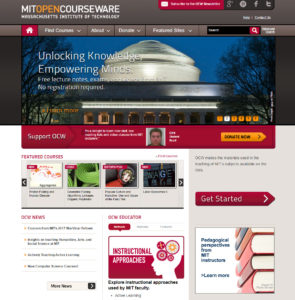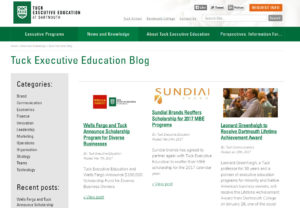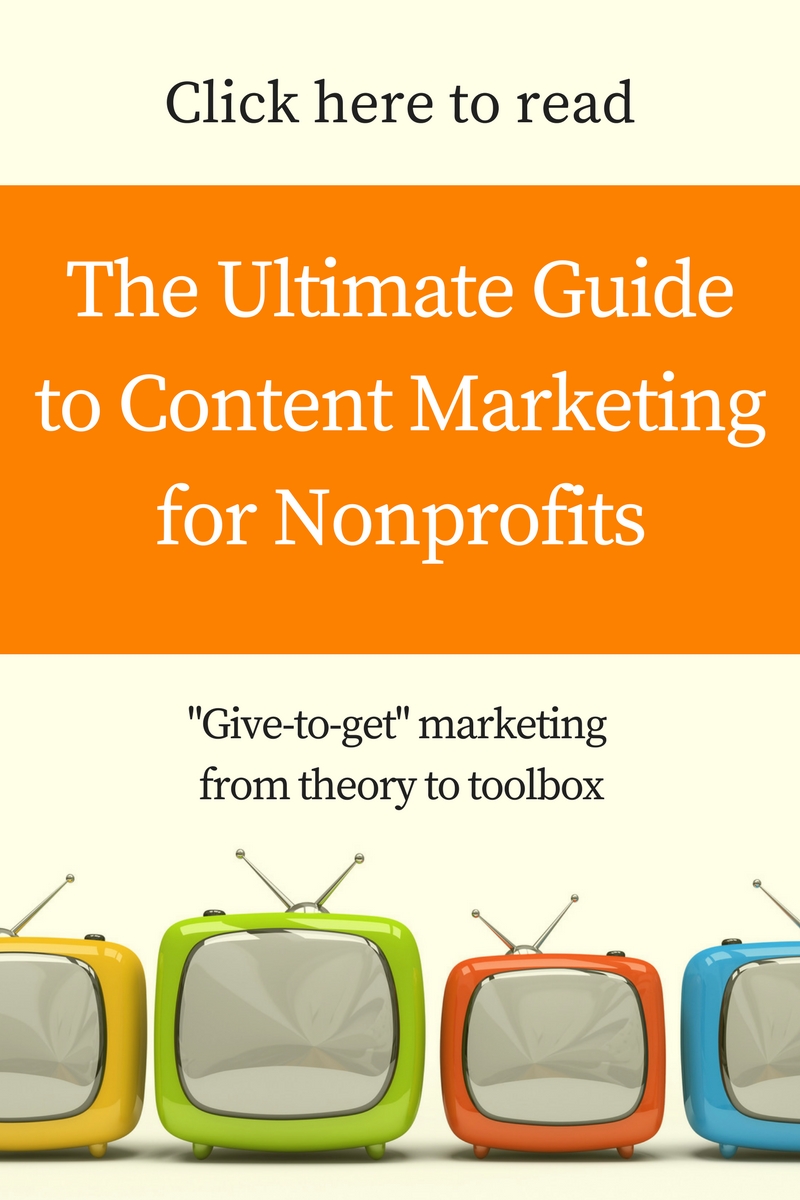Savvy higher education marketing professional have figured out that glossy pamphlets and viewbooks are moving and engaging their audience less all the time. Which is a serious problem in an era of declining enrollments, declining tax support and increased competition for tuition-paying students.
But great content marketing can build a higher ed brand. Content marketing is an especially good fit for educational institutions because they already have so much expertise and authority in their ranks to draw on. The colleges and universities that are surviving and thriving are establishing themselves as valuable resources, demonstrating thought leadership and focusing more on what their prospective students want to hear rather than what message the marketer wants to get across.
A robust content strategy is far from common practice in higher education marketing, but, when done well, it helps colleges and universities connect with students, parents, communities, businesses and other stakeholders and influencers.
Related reading: How Higher Ed Marketing Can Use Content for a Strategic Advantage
Great content marketing holds off on the self promotion and advertising. Instead it concentrates on being helpful and answering questions for the target audience, building trust and authority that will pay dividends over the long term.
Here are some of our favorite higher education marketing programs that use content marketing especially well. [Updated April 6, 2017. Let us know if we missed any you think we should profile. But, before you do, check out how we define content marketing.]
The University of Chicago — UChicagoNews
You’ll come for the catchy headlines — who can resist Book purchases of liberals and conservatives reveal partisan division? — but you’ll stay for more when you see that this school was mentioned in Scientific American. Before you know it you’re deep into their series of videos featuring their faculty.
This is also an excellent use of a news page, which on most websites is filled with out-of-date press releases that had limited appeal to begin with. The University of Chicago’s news page carries the school’s brand identity and gives readers something they can use in subjects like politics, science, arts and the humanities. It’s all seamlessly interspersed with community- and school-based announcements.
Columbia School of Business YouTube Channels
When the content in higher education marketing takes the form of video, it’s hard to find anyone doing it better than Columbia Business School. They publish short, snackable videos on complex and intriguing business topics by featuring faculty and students who speak in a conversational way about their work.
The Columbia School of Business YouTube channels paint a vivid picture of an exciting and innovative community. It’s virtually impossible to watch and not to think, “Maybe I should get my MBA.”
Though they don’t say so explicitly, we suspect the Columbia Business School is using these videos to counter a perception problem that many MBA programs suffer from: that they’re suited only for people going into corporate jobs rather than for aspiring entrepreneurs. Columbia Business School’s videos work against that stereotype by demonstrating innovation and entrepreneurship.
For example, a series of shorts with 2012 graduate Nina Tandon talking about (and showing) her biotech startup remind viewers of the program’s varied uses for entrepreneurs. And, of course, famous graduate Warren Buffett (Class of 1951) appears in a number of videos. Steve Blank, a hero of the Lean Startup movement, is also front and center.
College for America Blog
Southern New Hampshire University’s College for America (a McGuire Editorial client) is the business partnership program of SNHU. They work with employers to develop and deliver online degrees and other learning opportunities for working adults.
The in-depth articles and ebooks on the College for America blog aim to educate leaders in learning and human resources about issues related to talent development. They offer insight into workforce development trends as well as practical advice on using tuition assistance programs effectively. It’s all backed up with authoritative data and original interviews with thought leaders.
By exploring challenges that matter to their target audience in a meaningful and practical way, the articles attract prospective employer partners looking for ways to empower their workforces. Key to the blog’s success is that it not only reaches its intended audience; the content inspires readers to take action and provides clear next steps for those prospective students or businesses.
OWL at Purdue
If you’re a writing or editing person, it’s likely you’ve already spent some time on this website. You just might not have noticed that it’s the baby of Purdue University’s Writing Lab.
The Online Writing Lab, known to a generation of students and practicing writers as OWL, provides free writing resources and instructional materials to all. The site is packed with specific, useful information too vast to cover here: Articles range from avoiding plagiarism to writing a business letter or résumé. Sections take on research, subject-specific writing, research, job searching and even abridged versions of the MLA and APA style guides.
A link to Purdue OWL Vidcasts takes visitors to a YouTube channel populated by short videos that bring life and even humor to topics that are notoriously dry. Some videos — such as The 90-Second Semicolon — are quick instructional pieces. Others, like How Do You Get Started Writing a Paper?, feature real Purdue students musing about relatable questions.
In short, Purdue has established itself as the go-to resource for writing, using their internal expertise and authority, combined with the spirit of being helpful, to build their brand.
Boston University — Professor Voices
Boston University’s “Professor Voices” is a special “microsite” that collects articles and videos where Boston University faculty share their thoughts on timely topics such as upcoming elections, the United States’ relationship with Russia and corporate mergers.
It works well because parents, students and faculty who come across this content via social media or search are exposed to the unique viewpoints BU faculty have to offer and have more of a reason becoming part of the BU community. As with many examples of great higher education marketing, marketing may not have been the initial objective — but it’s an excellent additional benefit.
Having members of a higher education institution express their opinions on current issues allows them to demonstrate thought leadership. For example, prospective students might read BU Professor Tom Whalen’s article on gun control and start to consider studying law at BU.
The Chicago School of Professional Psychology — Insight Magazine
An earlier version of this list featuring The Harvard Business Review (below), caused some to respond, “Yeah, but that’s Harvard. We can’t do that.” But this next example shows that any institution, with serious focus on their expertise and their niche, can excel at brand publishing.
This is also a great example of a microsite. The Chicago School of Professional Psychology’s online magazine, Insight, brings together interesting and accessible articles on psychology. They cover relationships, family health and other familiar topics with thoughtfully produced-theme packages like Teenagers in Revolt or The Millennial Effect.
Insights is appeal to the school’s target market of doctors, therapists and other professionals working in psychology who may need continuing education, credentials or certificates.
Drake University Pinterest Channel
Content marketing is usually about “informing and helping,” but that doesn’t mean it all has to be focused on thought leadership. Drake University’s Pinterest page is about being informative and fun at the same time. One board is full of suggestions for dorm decor, another on healthy eating at college, another on life in Des Moines.
Of course, being on Pinterest, these pages are full of attractive photography. People use Pinterest to express feelings toward objects, according to research from social media management app Buffer. Universities have an opportunity to create visual content that prospective students (and the parents and high school teachers who influence them) can get excited about. If it evokes positive feels and helps people solve problems, it will receive tons of pins and create valuable good impressions. This is a terrific example of higher education marketing using content to connect with and engage their target — students and parents.
Harvard Business Review
On the extreme other end of the fun/thought leadership spectrum is Harvard Business Review, which has become the leading business publication in the U.S. and is constantly building up the prestige of Harvard Business School. This is an example of a boutique brand publication.
Brand publications such as Harvard Business Review are successful because they find a “content tilt,” a phrase the Content Marketing Institute’s Joe Pulizzi coined. This means the content is unique and the publishers know their audience well. It is consumer-oriented, which negates the risk of it seeming like a promotional tool.
Brand publications should not be about pushing the brand, but letting excellent work speak for itself, and Harvard Business Review knows this.
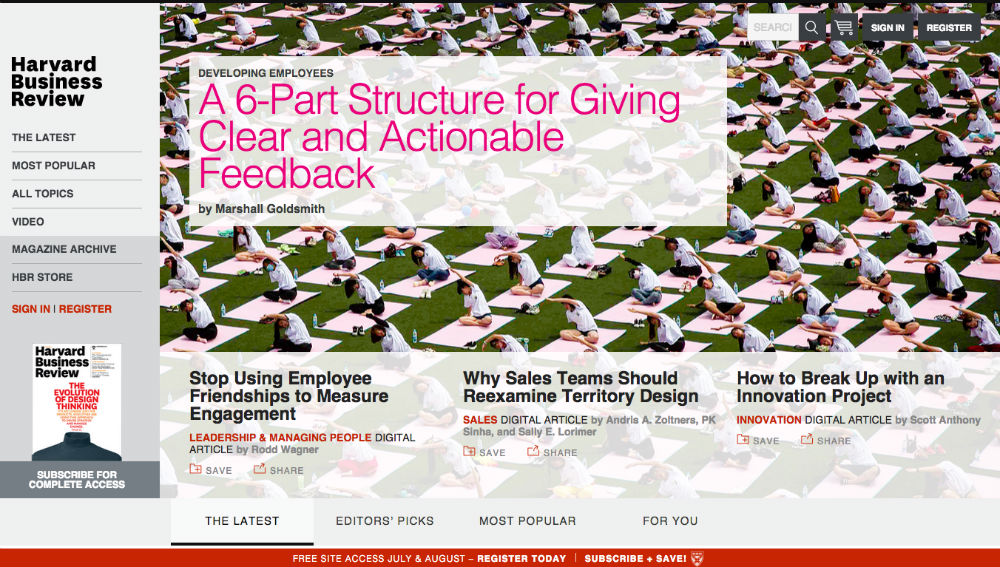
MIT OpenCourseWare
Sometimes content marketing is described as “giving the goods away for free,” and MIT OpenCourseWare is a prime example of that approach. For 10 years, working on a massive scale, The Massachusetts Institute of Technology allowed anyone in the world access to recorded lectures and other materials from hundreds of MIT courses for free.
OpenCourseWare was a huge part of the Massive Open Online Course (MOOC) movement and many of the materials were the seeds of courses in the edX consortium.
Dartmouth University — Tuck Executive Education Blog
The Tuck School of Executive Education at Dartmouth University helps executives improve their skills by providing personalized learning. To attract these executives, Tuck’s blog publishes content on issues executives care about such as leadership and innovation.
This approach s probably most similar to typical B2B content marketing where the brand uses content to attract people who make purchase decisions for products or services for their staff. (This can be a useful tactic for engaging current and former customers also, which is an important part of any content plan.) If potential buyers see an interesting article on running effective meetings circulating around and land on the Tuck blog, that’s the beginning of a relationship that — over large traffic numbers — leads to a series of micro-conversions for some visitors.
Some will visit again. Some will sign up for a newsletter. And some will click on a call-to-action in the newsletter indicating interest in hearing about the program. The great thing about digital marketing is that it allows for measuring, learning and iterating.
Why are these cases of higher education marketing so special?
These institutions excel at content marketing because they go beyond shooting promotional videos about their great campuses and classes. These content marketing examples show how different stakeholders can be moved along the sales funnel. The target audience will include a range of people from those who have zero awareness of the brand to those who are ready to make a serious buying decision.
A topical article from a faculty member can garner dozens of press mentions and get the attention of hundreds of people who may not have considered attending or working with that school. A video or press release touting the same professor will come across like an ad and having trouble capturing attention.
All the universities on this list provide content that benefits a wide range of people without drifting into advertisement territory. It’s time for the rest of the educational landscape to take some notes.
Do you know another higher education institution you think is killing it with content marketing? Let us know and we’ll consider adding it to the list.

Joseph Rauch
Guest Author
Joseph Rauch is a content writer and journalist who plans to publish his novel and use his content marketing skills to ensure it sells.
Follow Us
[nino_social_custom nino-size-64 nino-css3-style-7 nino-social-style-3 nino-align-center nino_social_linkedIn:robertwmcguire nino_social_twitter:robertwmcguire nino_social_social-google:115072345633828765009%2F nino_social_quora:http%3A%2F%2Fwww.quora.com%2FRobert-McGuire-1%2Fanswers nino_social_email:robert%40mcguireeditorial.com]



